Knowing how and when to join together elements in a watercolour painting can be a very useful skill for creating a more painterly finish as GRAHAME BOOTH explains.

When we look at anything, we tend to think in terms of objects. If we see a coffee cup sitting in a saucer resting on a table, we think of this as three individual objects. When we paint, however, we must think in a slightly different way.
Instead we should look for shapes – specifically ones that connect together. Using the previous example, we should be trying to see a cup connected to a saucer connected to the table – one single, rather abstract shape. As artists, we should paint it as a single shape, using soft, blended colour between the three.
As a rule of thumb, if two objects physically touch you should be thinking of creating a soft blend between the two and if they don’t physically touch then a hard edge would be indicated. Using this advice will help you to fill your paintings with a small number of interesting interlocking shapes rather than with many separate, less interesting shapes and paradoxically this helps to both simplify your subject and at the same time make it more interesting.
So how can we achieve this? At a most basic level, when you encounter a physical connection simply continue painting. Allow the building to blend into the road or the tree to blend with the earth. These connections give stability and solidity.
A building painted with a hard edge at the bottom will look temporary, a little like a toy that could be removed at any time.
As with all things in art there are exceptions. Often a soft edge between two connected shapes may literally blur things too much, making it difficult to work out the structure of either. In this situation, indicating a little of the edge is required; just enough to specify the boundary without completely separating the two. Indeed, this can help make an edge even more interesting. A slight softening of a hard edge or a slight hardening of a soft edge also gives variety without compromising the basic idea.
This story is from the {{IssueName}} edition of {{MagazineName}}.
Start your 7-day Magzter GOLD free trial to access thousands of curated premium stories, and 9,000+ magazines and newspapers.
Already a subscriber ? Sign In
This story is from the {{IssueName}} edition of {{MagazineName}}.
Start your 7-day Magzter GOLD free trial to access thousands of curated premium stories, and 9,000+ magazines and newspapers.
Already a subscriber? Sign In

Still life IN 3 HOURS
Former BP Portrait Award runner-up FELICIA FORTE guides you through a simple, structured approach to painting alla prima that tackles dark, average and light colours in turn
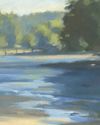
Movement in composition
Through an analysis of three masterworks, landscape painter and noted author MITCHELL ALBALA shows how you can animate landscape composition with movement
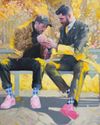
Shane Berkery
The Irish-Japanese artist talks to REBECCA BRADBURY about the innovative concepts and original colour combinations he brings to his figurative oil paintings from his Dublin garden studio

The Working Artist
Something old, something new... Our columnist LAURA BOSWELL has expert advice for balancing fresh ideas with completing half-finished work
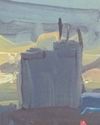
Washes AND GLAZES
Art Academy’s ROB PEPPER introduces an in-depth guide to incorporating various techniques into your next masterpiece. Artwork by STAN MILLER, CHRIS ROBINSON and MICHELE ILLING

Hands
LAURA SMITH continues her new four-part series, which encourages you to draw elements of old master paintings, and this month’s focus is on capturing hands

Vincent van Gogh
To celebrate The Courtauld’s forthcoming landmark display of the troubled Dutch master’s self-portraits, STEVE PILL looks at the stories behind 10 of the most dramatic works on display
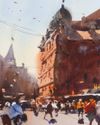
BRING THE drama
Join international watercolour maestro ALVARO CASTAGNET in London’s West End to paint a dramatic street scene
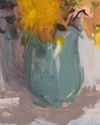
Serena Rowe
The Scottish painter tells STEVE PILL why time is precious, why emotional responses to colour are useful, and how she finds focus every day with the help of her studio wall

Bill Jacklin
Chatting over Zoom as he recovers from appendicitis, the Royal Academician tells STEVE PILL about classic scrapes in New York and his recent experiments with illustration